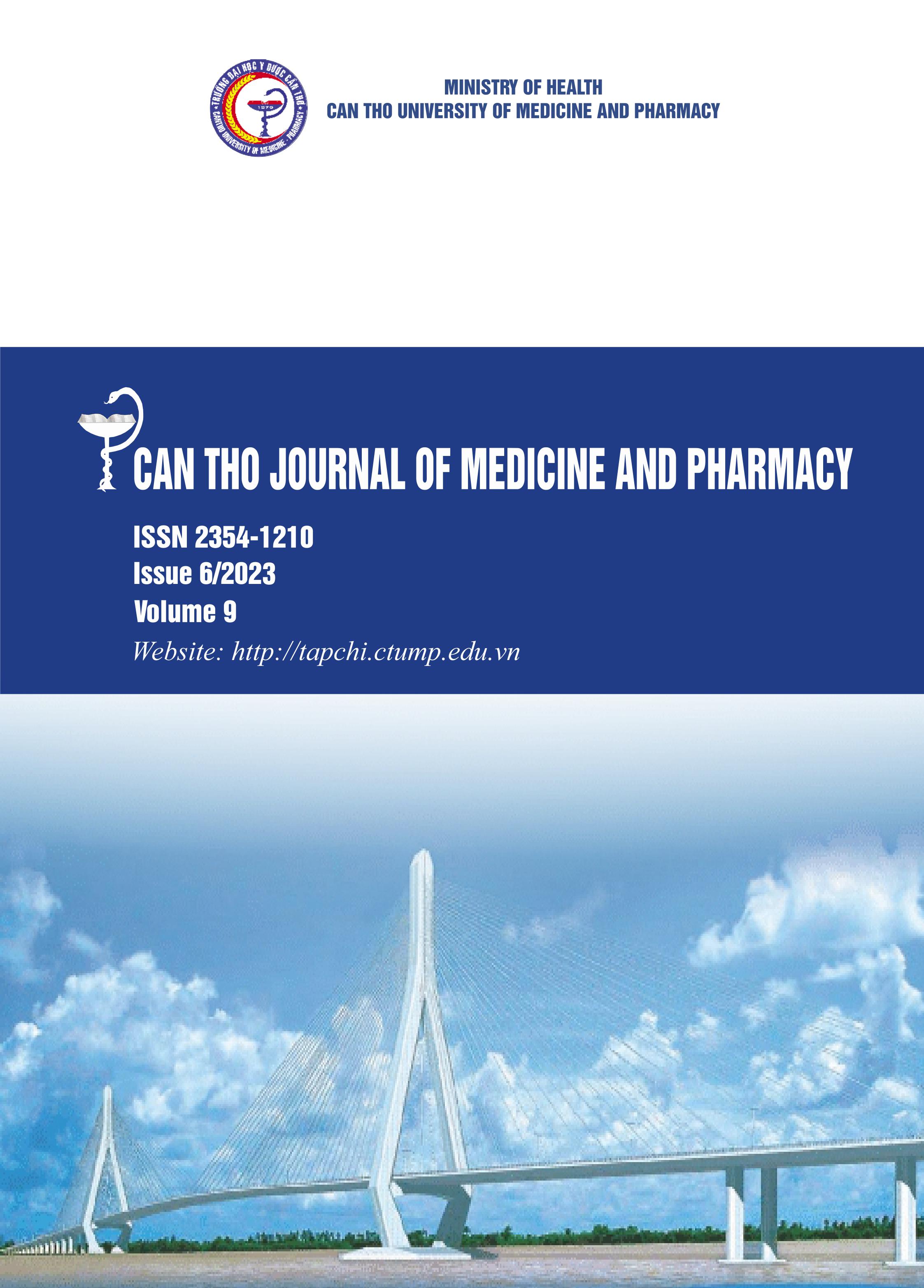EX VIVO PERMEATION STUDY OF NANOSTRUCTURED DOSAGE FORM CONTAINING MANGO SEED KERNEL EXTRACT USING FRANZ CELL
Nội dung chính của bài viết
Tóm tắt
Background: mango seeds (Mangiferin indica L.) have the ability to inhibit P. acnes, S.aureus, and E. coli bacteria and inhibit inflammation, potentially for transdermal therapeutic dosage forms. The nano-emulsion dosage forms were prepared based on the SNEDDS system with nano-oil droplets containing mango seed extract. These dosage forms contributed to carrying the active ingredient deeply into the impact site, bringing the highest efficiency, but this needs to be proven. Thus, it is necessary to study the process to evaluate the permeability of these formulas to prove their availability improvement. Objectives: To assess the transdermal permeability and active substance release of nanostructured dosage forms by a validated procedure. Methods: an ex vivo experiment was designed by adding a sample to diffuse through Franz cells. In addition, to ensure the quality and effectiveness of preparations containing mango seeds, developing and validating a process for quantifying the total polyphenols in the preparation are extremely necessary. Total polyphenols were quantified by color complexing with Folin-Ciocalteu reagents, with maximum absorption at 765 nm. Results: the procedure had been validated according to the International Conference on Harmonization (ICH) on the criteria of specificity, system compatibility with RSD = 1.02%, linearity built on the concentration range of 10–50 µg/ml with R2 = 0.998, accuracy, precision with %recovery in the range of 97.73% to 102.56%. The results showed that more than 300 mg/g of polyphenol was released after 6 hours from the tested nanostructured dosage form, about 4.3 times as many as the total amount of polyphenols in the comparative cream. Conclusions: the quantification of polyphenols diffused through Franz cells helps evaluate the quality of the preparation. The procedure had been validated according to the International Conference on Harmonization (ICH) and could be applied to evaluate nanostructured dosage forms containing mango seed kernel.
Chi tiết bài viết
Từ khóa
mango seed kernel extract, Franz cell, polyphenols, nanostructured dosage forms
Tài liệu tham khảo
2. Mutua JK, Imathiu S. and Owino W. Evaluation of the proximate composition, antioxidant potential, and antimicrobial activity of mango seed kernel extracts. Food Science & Nutrition. 2017.5(2), 249-257. doi:10.1002/fsn3.399.
3. Nguyen ATL, Akanbi TO, Tawiah NA, Aryee ANA. Valorization of seed and kernel marcs and evaluation of their antioxidant potential. Food Chem. 2022. 1.390:133168. doi: 10.1016/j.foodchem.2022.133168.
4. Shaban NZ, El-Rashidy FH, Adam AH, Beltagy DM, Ali AE, et al. Anticancer role of mango (Mangifera indica L.) peel and seed kernel extracts against 7,12- dimethylbenz[a]anthracene-induced mammary carcinogenesis in female rats. Sci Rep. 2023 May 11.13(1), 7703. doi: 10.1038/s41598-023-34626-6.
5. Angamuthu S, Thangaswamy S, Raju A, Husain FM, Ahmed B, et al. Biogenic Preparation and Characterization of Silver Nanoparticles from Seed Kernel of Mangifera indica and Their Antibacterial Potential against Shigella spp. Molecules. 2023 Mar 8.28(6), 2468, doi:
10.3390/molecules28062468.
6. Poomanee W, Khunkitti W, Chaiyana W, Intasai N, Lin WC, et al. Multifunctional biological properties and phytochemical constituents of Mangifera indica L. seed kernel extract for preventing skin aging. Toxicol Res. 2021. 37(4), 459-472. doi: 10.1007/s43188-020-00079-6.
7. Ha Cao Thien, Dang Duy Khanh and Nguyen Ngoc Nha Thao. Evaluation of the antibacterial activities of seed peel and seed kernel extracts from mango (Mangifera indica L.). Can Tho Journal of Medicine and Pharmacy. 2022.52, 197-204.doi:10.58490/ctump.2022i51.331.
8. Buya AB, Beloqui A, Memvanga PB and Préat V. Self-nano-emulsifying drug-delivery systems:
From the development to the current applications and challenges in oral drug delivery. Pharmaceutics. 2020. 12(12), 1194. doi: 10.3390/pharmaceutics12121194.
9. Borman P and Elder D. Q2(R1) Validation of Analytical Procedures. in: ICH Quality Guidelines, John Wiley & Sons. 2018, 127-166. doi:10.1002/9781118971147.ch5.
10. Nguyen Thi Thanh Binh. Drug release evaluation and permeability estimation of OMEGAKA through the skin. Viet Nam National University, Hanoi. 2014, 706-708.
11. Kaddar N, Harthe C, Dechaud H, Mappus E, Pugeat M. Cutaneous Penetration of Bisphenol A in Pig Skin. Journal of Toxicology and Environmental Health. 2008.71(8), 471-473. doi:
10.1080/15287390801906824.
12. Harwansh RK, Patra KC, Pareta SK, Singh J, Rahman MA. Nanoemulsions as vehicles for transdermal delivery of glycyrrhizin. Brazilian Journal of Pharmaceutical Sciences. 2011. 47(4), 776-777. doi:10.1590/S1984-82502011000400014
13. Akram A, Akhatar N, Waquas MK, Rasul A, Rehman KU et al. Development, characterization and evaluation of ginger extract loaded microemulsion: In vitro and Ex vivo release studies. Pak J Pharm Sci. 2019. 32(4), 1877.


